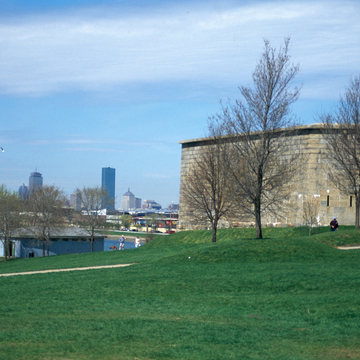In 1634 Governor John Winthrop first fortified Castle Island, making it the earliest fortified site surviving on Boston Harbor. Commanding a view over the entrance to the harbor, the site was constantly renamed and rebuilt to fill the needs of the colony, commonwealth and nation. In 1798, Massachusetts sold the island to the federal government and President John Adams renamed it Fort
You are here
Fort Independence
1809, John Foncin; 1835–1851. Castle Island at eastern end of Gardner Way.
If SAH Archipedia has been useful to you, please consider supporting it.
SAH Archipedia tells the story of the United States through its buildings, landscapes, and cities. This freely available resource empowers the public with authoritative knowledge that deepens their understanding and appreciation of the built environment. But the Society of Architectural Historians, which created SAH Archipedia with University of Virginia Press, needs your support to maintain the high-caliber research, writing, photography, cartography, editing, design, and programming that make SAH Archipedia a trusted online resource available to all who value the history of place, heritage tourism, and learning.















